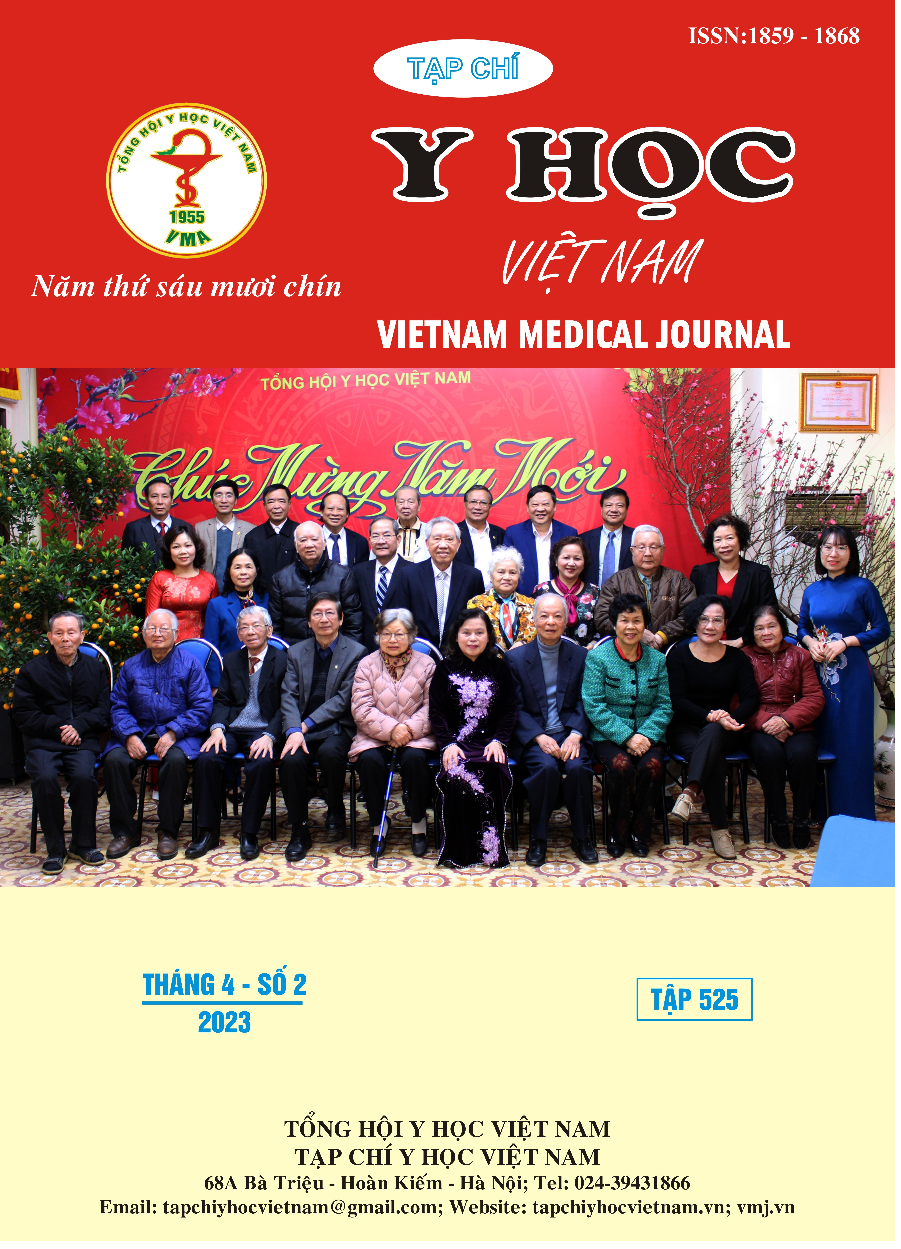ĐIỀU TRỊ VÀNG DA SƠ SINH BẰNG ÁNH SÁNG XANH VÀ MỘT SỐ GIẢI PHÁP PHÒNG BIẾN CHỨNG TRONG QUÁ TRÌNH ĐIỀU TRỊ
Nội dung chính của bài viết
Tóm tắt
Mục tiêu: Mô tả kết quả điều trị vàng da sơ sinh bằng liệu pháp ánh sáng xanh và đánh giá hiệu quả của một số biện pháp phòng biến chứng trong quá trình điều trị tại BV trường ĐKYK Vinh và BV thành phố Vinh năm 2022. Phương pháp nghiên cứu: Nghiên cứu mô tả cắt ngang có phân tích. Kết quả: Nghiên cứu được thực hiện với sự tham gia của 149 trẻ sơ sinh được chiếu đèn vàng da và đánh giá kết quả chiếu đèn và hiệu quả của một số biện pháp phòng biến chứng trong quá trình điều trị tại BV Trường ĐHYK và BVĐK thành phố Vinh năm 2022. Kết quả: tỷ lệ vàng da tăng Bilirubin gián tiếp ở trẻ sơ sinh nam/nữ là 1.26/1; 89.9% trẻ phát hiện vàng da tại nhà; Tỷ lệ bất đồng nhóm máu chung là 10.1%; Tỷ lệ chiếu đèn ở nhóm phát hiện sớm trong 48h đầu sau sinh là 26.2% trên tổng số trẻ phát hiện sớm là 51.6%; 7.4% trẻ có tác dụng phụ trong khi chiếu đèn gồm 2% da nổi mẩn đỏ, 5.4% mất nước; 98.0% trẻ sau chiếu đèn ổn định và ra viện; có 2.0% trẻ có biểu hiện các triệu chứng diễn biến đã dược hội chẩn và chuyển Bv Sản Nhi Nghệ An. Thời gian chiếu đèn TB của nhóm trẻ có bất đồng nhóm máu mẹ - con dài hơn so với nhóm không bất đồng nhóm máu; Trẻ uống sữa công thức có thời gian chiếu đèn trung bình dài hơn những trẻ được bú sữa mẹ hoàn toàn. Trẻ xuất hiện vàng da sớm thì thời gian chiếu đèn trung bình dài hơn so với thời điểm xuất hiện vàng da muộn. Kết luận: Vàng da sơ sinh do tăng bilirubin tự do liên quan tới đặc điểm chuyển hoá bilirubin trong cơ thể trẻ ở những ngày đầu sau sinh. Cùng với sự phát triển của chất lượng y tế, nhận thức của bà mẹ ngày một nâng cao, trẻ sau sinh được phát hiện và điều trị sớm, mức độ vàng da không quá cao và bilirubin gián tiếp tăng không quá nhanh nên hầu hết trẻ tiên lượng đều tốt và ra viện sau vài ngày điều trị bằng ánh sáng liệu pháp, trẻ phát triển hoàn toàn bình thường không để lại di chứng. Do đó cần nâng cao kiến thức, thái độ, thực hành xử trí chăm sóc và phòng ngừa vàng da của các bà mẹ trong 48 giờ đầu sau khi sinh.
Chi tiết bài viết
Từ khóa
Vàng da sơ sinh; Bilirubin gián tiếp.
Tài liệu tham khảo
2. Khu Thị Khánh Dung (2010). Đặc điểm của trẻ sơ sinh nhập viện do tăng bilirubin máu cao tại Bệnh viện Nhi Trung Ương. Y Học Việt Nam, 367, 29 - 34.
3. Olusanya B.O, Akande A.A, Emokpae A, et al (2009). Infants with severe neonatal jaundice in Lagos, Nigeria: incidence, correlates and hearing screening outcomes. Trop Med Int Health, 14(3), 301-10.
4. Nguyễn Thị Hoàng Oanh (2020). Đặc điểm lâm sàng, cận lâm sàng của vàng da do tăng bilirubin gián tiếp ở trẻ sơ sinh tại khoa Sơ sinh Bệnh viện Sản nhi Nghệ An năm 2020
5. Đào Minh Tuyết (2009) “Đánh giá kết quả điều trị vàng da tăng bilirubin GT ở trẻ sơ sinh bằng liệu pháp ánh sáng tại Khoa Nhi Bệnh viện Đa khoa Trung ương Thái Nguyên”, Tạp chí y học thực hành, 10 (679), 37-40.
6. Bùi Khánh Linh (2018), Đánh giá kết quả điều trị vàng da tăng bilirubin gián tiếp ở trẻ sơ sinh bằng liệu pháp ánh sáng tại Bệnh viện Sản Nhi Bắc Ninh năm 2017. Luận Văn tốt nghiệp, Đại học Y Hà Nội


